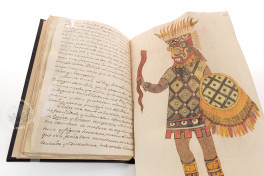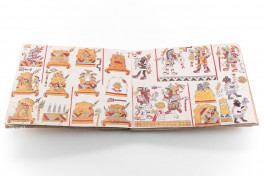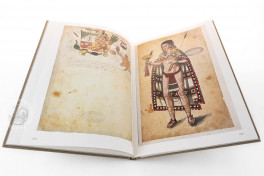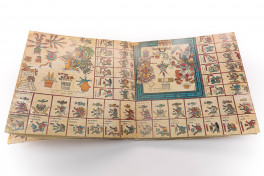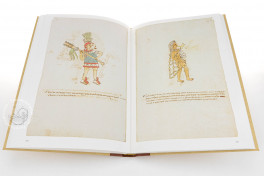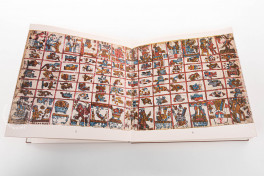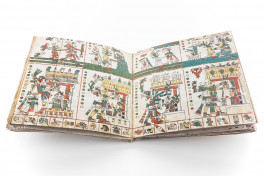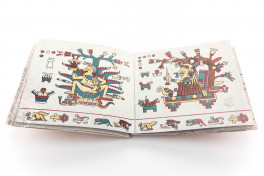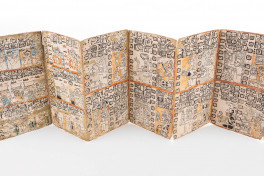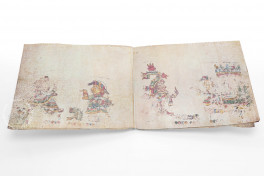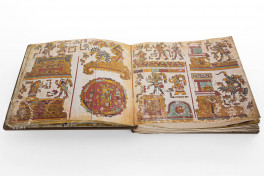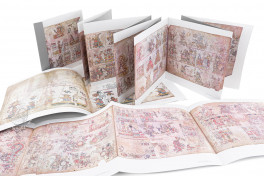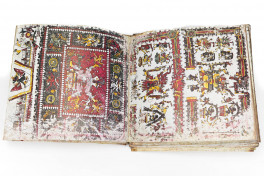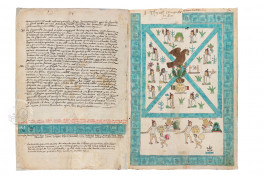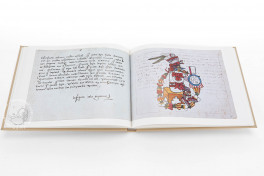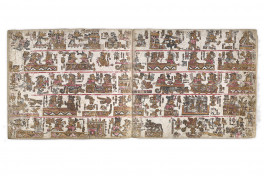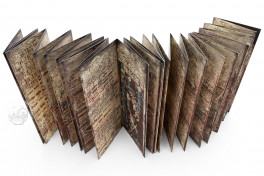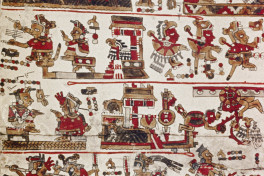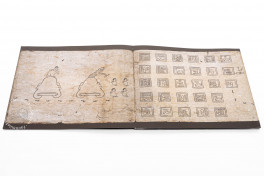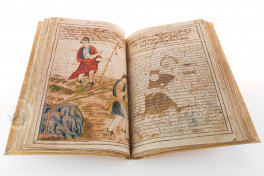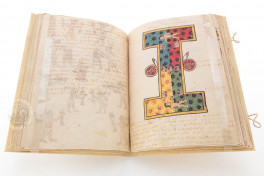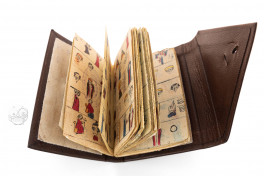Only about a dozen Pre-Columbian manuscripts have survived from central Mexico; about two dozen Mesoamerican manuscripts remain, despite the book-burning fury of Spanish conquistadores and native rulers who allied themselves with the Spanish.
Religious ritual books, calendars, the efficacy of medicinal plants, divination almanacs, description of ceremonies, collections of laws, great deeds of rulers − all were the subject matter of Pre-Conquest Mesoamerican codices painted on deerskin, bark or cotton cloth.
Screenfold manuscripts aren't codices proper, but often rather large, accordion-pleated books painted on large pieces of bark, animal skin or cloth, then folded to form leaves or pages. The ‘pages’ were then often enclosed in protective wooden covers.
Instead of an alphabetic script, the Mayans employed a complex hieroglyphic system that remained undecipherable until only recently. Pigments and coloring materials used in Pre-Columbian manuscripts keenly interest modern manuscript scholars and artists, because knowledge about the colorants is exceedingly rare.
The color purple, for instance, was derived from a Mexican mollusk and used extensively throughout the Codex Nuttall. Pre-Columbian manuscripts give a unique and vital glimpse into the world of Pre-Columbian culture.

